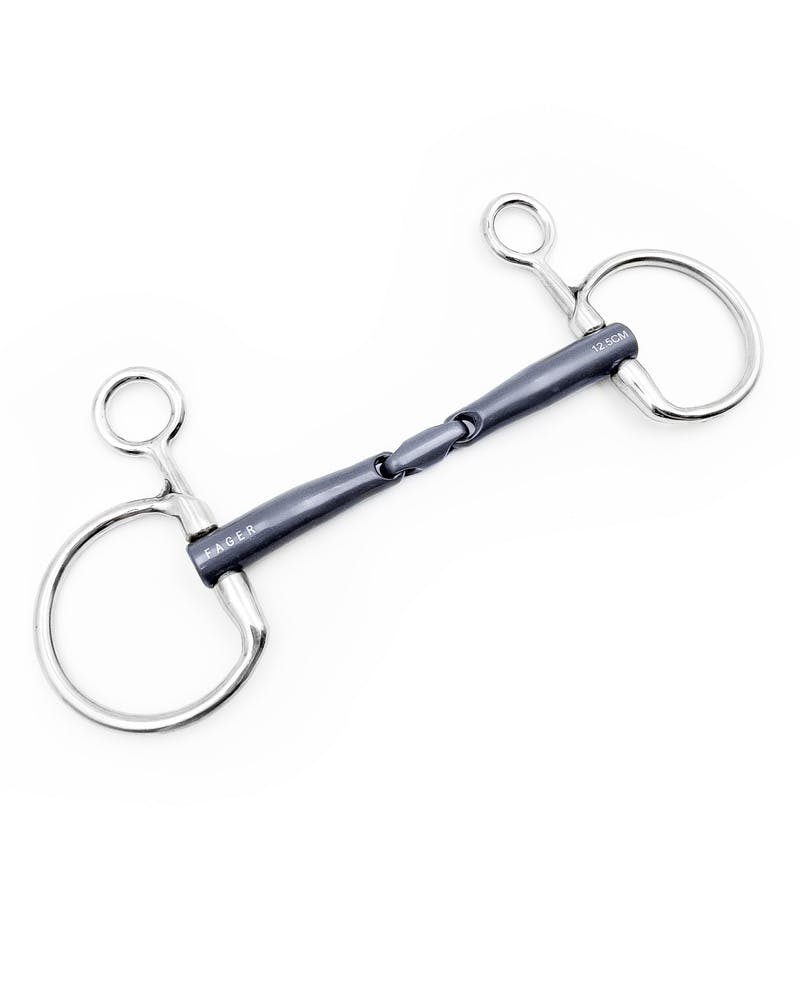Livraison dans le monde entier | Un design suédois
MORS
MORS DE FILET
EFFET LEVIER
MORS HACKAMORE TANDEM
ACCESSOIRES POUR MORS
CAVALIER
PANTALONS D'ÉQUITATION
HAUTS ET VESTES
GUIDE ET INSPIRATION
GÉNÉRAL
LES PIÈCES LATÉRALES
GUIDES POPULAIRES
0
Choisir un mors pour un cheval avec des barres sensibles peut être un défi. Tous les chevaux sont différents et ont besoin d'une action différente du mors.
Nous sommes là pour vous guider vers la meilleure option pour vous et votre cheval !

La langue du cheval contient une dizaine de muscles et peut être très sensible à la pression. La langue est également positionnée au-dessus des barres, ce qui lui fait prendre plus de pression que les barres. Les barres sont l'espace des deux côtés de la langue, entre les incisives et les molaires. La forme des barres est différente d'un cheval à l'autre ; Certains chevaux ont des barres plus saillantes et plus tranchantes que d'autres.
La langue est un muscle, tandis que les barres sont un os recouvert de muqueuses, la langue peut résister à plus de pression que les barres. Mais certains chevaux sont plus sensibles à la pression sur la langue, et il est courant que les chevaux aiment un mors avec un passage de langue.
Signes courants des barres sensibles :
Votre cheval peut lever la tête lorsque vous prenez le contact sur les rênes
Votre cheval peut mâcher fort le mors
Votre cheval met sa langue sur le côté de la bouche
Votre cheval peut réagir de manière excessive lorsque vous prenez les rênes
Signes courants d'une langue sensible :
Votre cheval peut tirer les rênes vers le bas/vers l'avant
Votre cheval peut ouvrir la bouche
Votre cheval joue avec la langue, et/ou met la langue par/derrière le mors
Votre cheval peut être instable dans le contact
Même si votre cheval est plus sensible à la pression sur la langue, il est toujours essentiel d'avoir un mors avec un soulagement de la pression sur les barres pour varier afin de s'assurer que les barres ne subissent pas trop de pression. Il est également important de s'assurer que le passage de langue du mors est adapté à la forme de la bouche de votre cheval, car les chevaux avec une langue plus grosse peuvent avoir un passage de langue plus grand que les chevaux avec une langue plus fine.
Nous avons différents types de mors qui donnent moins de pression sur les barres, car tous les chevaux ont des formes de bouche différentes, et le cavalier peut vouloir des sensations différentes avec les mors. Voici quelques-uns de nos mors préférés pour les chevaux avec des barres sensibles. La chose la plus importante à prendre en compte pour la protection des barres est de choisir la bonne taille. Un mors trop large glissera d'un côté à l'autre, risquant de causer des lésions sur les barres.
Tous les mors assez droits (pas de passage de langue / pas de pont) et avec des articulations lisses ou horizontales entre les canons du mors conviennent aux chevaux avec des barres sensibles. Nous recommandons des brisures lisses ou horizontales, car si le mors glisse d'un côté, les articualtions des canons du mors n'endommageront pas les barres aussi facilement.
Les embouchures sans pont / passage de langue protégeront automatiquement les barres, car la langue se pose au’dessus des barres et supportera le plus de pression.
Pour un cheval avec une bouche étroite entre les barres, un mors simple brisure peut être préférable pour s'assurer que les brisures du mors ne pincent pas les muqueuses des barres lorsqu'il se déplace d'un côté à l'autre. Pour les chevaux avec une bouche de taille normale, un mors à double brisure de la bonne taille fonctionne généralement bien. Combinez ces embouchures avec des anneaux de type baucher pour rendre le mors encore plus doux pour les barres.
Si votre cheval a des lésions sur les barres, de périostites ou des suros, vous devrez peut-être choisir un mors avec un soulagement maximal des barres. Nous avons un modèle qui peut être retourné pour générer un soulagement de la pression sur les barres, sans donner une pression trop forte sur la langue.

Ces embouchures sont confectionnées avec une surface 100 % lisse, même autour des articulations des canons du mors. Grâce aux brisures lisses et à la petite courbure, ces embouchures peuvent être retournées. La courbure pointe vers le bas, contre la langue, soulevant le mors des barres. C'est une bonne solution pour un soulagement maximal des barres.
Ces embouchures ont un système bloquant particulier. Les mors Michael et Mia ôtent la pression sur les barres en se bloquant vers le haut, ce qui en fait un excellent mors pour les chevaux avec un palais bas et des barres sensibles.
Les brisures sont orientées à l'opposé des barres. Cela peut être bon pour les chevaux qui peuvent réagir de manière excessive lorsque vous prenez du contact sur les rênes et dont on doit protéger les barres
INSCRIVEZ-VOUS POUR RECEVOIR NOTRE BULLETIN
Soyez le premier à être informés des nouveautés et des promotions
SUPPORT CLIENT
QUI SOMMES-NOUS?
PRODUITS POPULAIRES
France / EUR
0



Baucher en Titane Emil
Baucher en Sweet iron John
Baucher en Titane Laura
135.00 EUR
99.00 EUR
135.00 EUR




Anneaux fixes en Sweet Iron Michael
Anneaux libres en Sweet Iron Michael
Anneaux fixes en Titane Mia
Anneaux libres en Titane Mia
95.00 EUR
95.00 EUR
129.00 EUR
129.00 EUR